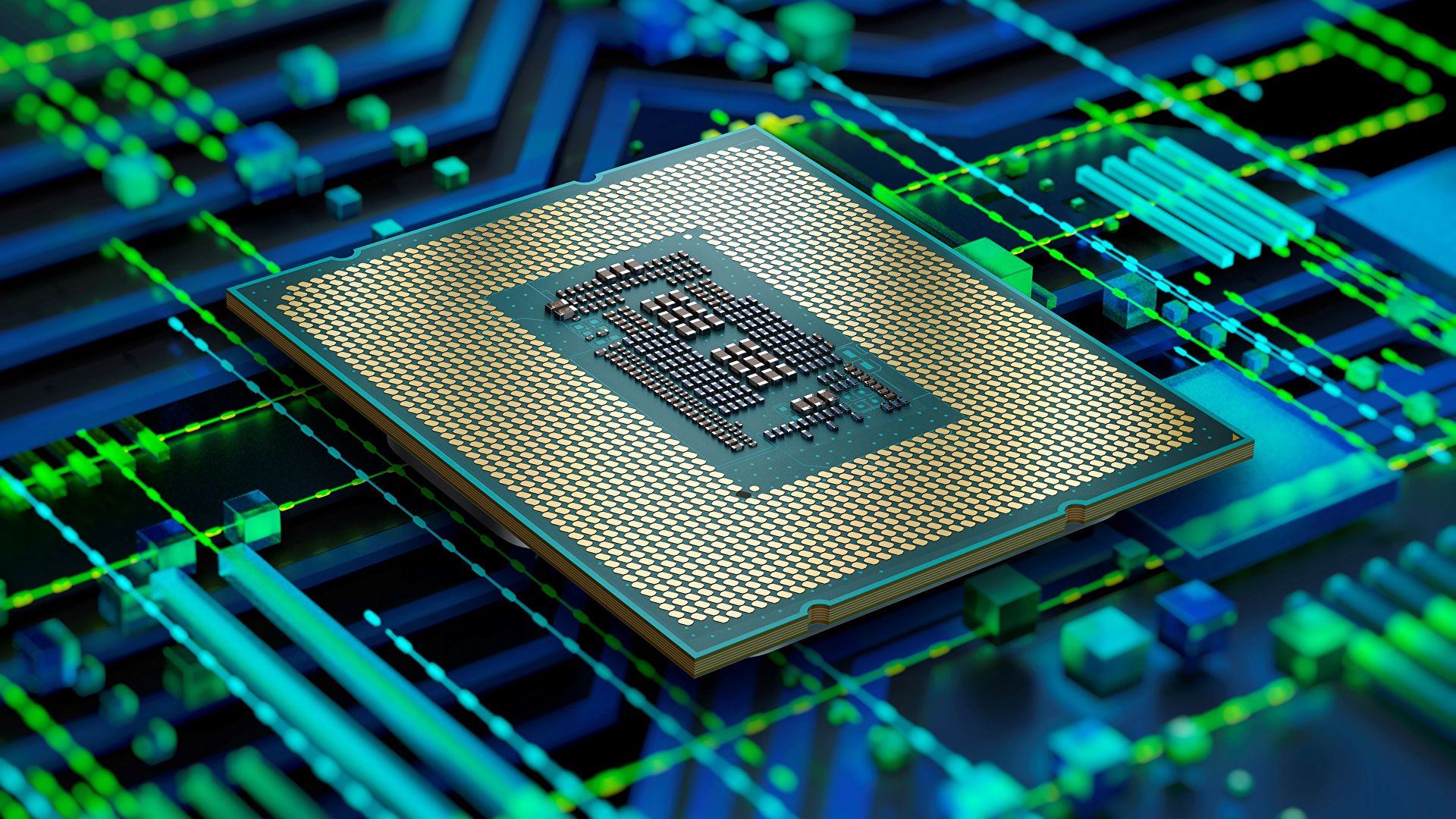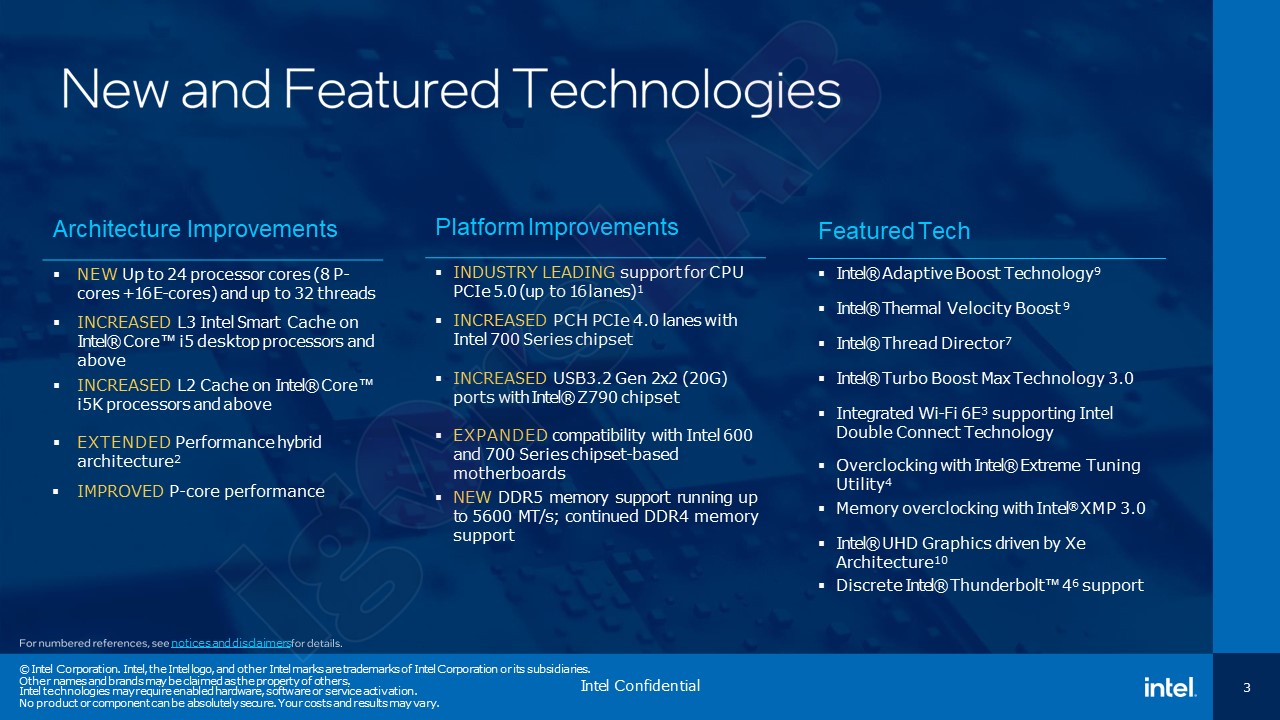Intel's 13th Gen 13600 and below to be based on the older Alder Lake architecture
Only the 13600K, Core i7, and Core i9 ranges reportedly come with Intel's new Raptor Lake architecture.

Just days ago, I said how excited I was about the upcoming Intel Core i5 13400. The addition of E cores is certainly the biggest improvement over our favorite budget CPU, the i5 12400, but there's some new information that leads me to put an asterisk next to the word excited.
According to leaked slides from Igor's Lab (via 3Dcenter.org) the non-K i5 chips won't be based on the Raptor Lake architecture, but instead be based on the existing 12th Gen Alder Lake with its Golden Cove P cores. This means the likes of the 13400, 13500 and 13600 will miss out on the Cypress Cove P core improvements that come with Raptor Lake, including cache size increases.
This means the i5s will have a tougher time against AMDs upcoming Zen 4 chips, particularly the Ryzen 5 7600X and possibly take a little of the shine off of what we'd otherwise expect to be excellent budget gaming CPUs.
It's important to remember that a 13400 or 13500 would be very much like locked versions of the i5 12600K. That's already an excellent CPU, and with a 65W TDP and hopefully competitive pricing, 13th Gen i5s can still be very competitive chips, not just for gaming, but in general use too.
It’s expected that K-series Core i5 CPUs will include Raptor Lake upgrades, as well as all Core i7 and i9 chips. The reasoning behind this assumption is the slide above that states only i5 K series processors and higher will include more L2 cache.
If locked i5 chips are to be based on Alder Lake, then future i3 13300 or 13100 models are certain to be as well. That's a discussion for the future though. They can be expected to go up against variants of AMD's Dragon Range or Phoenix APUs.
None of this will mean a lot to the market. Locked 13th Gen i5 CPUs, even if they are based on Alder Lake, will still offer a good improvement over their 12th Gen predecessors. They're clocked higher, include E cores and maintain 65W TDPs, so if they're priced right, there's no reason that Intel won't remain competitive in the entry and mid-range CPU markets.
The biggest gaming news, reviews and hardware deals
Keep up to date with the most important stories and the best deals, as picked by the PC Gamer team.


Best CPU for gaming: The top chips from Intel and AMD
Best gaming motherboard: The right boards
Best graphics card: Your perfect pixel-pusher awaits
Best SSD for gaming: Get into the game ahead of the rest
We'll have to wait a while though, as the locked chips are not expected to launch alongside the enthusiast-oriented K CPUs, instead launching in early 2023, possibly at CES.
It's all going to come down to which chips offer the best balance of price, performance and power consumption. Plus, there's the fact that Zen 4 systems require the purchase of a new motherboard and RAM. The i5 CPU's compatibility with currently available motherboards and DDR4 memory means they have a value advantage from the get go.
The first wave of Raptor Lake CPUs will consist of the 13900K, 13700K and 13600K along with their F-series counterparts, which lack integrated graphics. AMD's competing Zen 4 CPUs are expected to launch later in September.

Chris' gaming experiences go back to the mid-nineties when he conned his parents into buying an 'educational PC' that was conveniently overpowered to play Doom and Tie Fighter. He developed a love of extreme overclocking that destroyed his savings despite the cheaper hardware on offer via his job at a PC store. To afford more LN2 he began moonlighting as a reviewer for VR-Zone before jumping the fence to work for MSI Australia. Since then, he's gone back to journalism, enthusiastically reviewing the latest and greatest components for PC & Tech Authority, PC Powerplay and currently Australian Personal Computer magazine and PC Gamer. Chris still puts far too many hours into Borderlands 3, always striving to become a more efficient killer.

